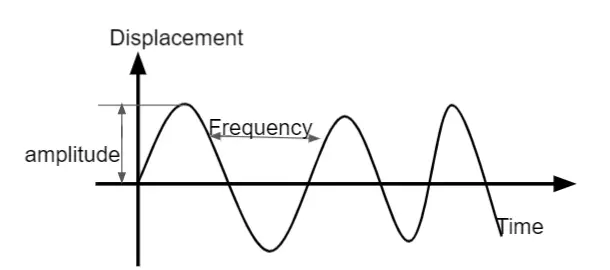Simple Harmonic Motion Calculator
Free online Simple Harmonic Motion Calculator will give the acceleration, velocity, and displacement of the oscillating object in frcation of seconds. Enter amplitude, frequency, and time in the input fields and click the calculate button to get the result easily.
How to Calculate Acceleration, Velocity of Oscillating Particle?
The step by step process to get the velocity, acceleration, and displacement of the oscillating particle is mentioned-below.
- Check the amplitude, time, frequency and angular frequency of an oscillating particle.
- Find the sine function of product of angular frequency and time.
- Multiply the result by amplitude to get the displacement of the aprticle.
- Compute the cos function of product of angular frequency and time.
- Multiply the result by the amplitude to obtain the velocity of the particle.
- Square the angular frequency and multiply it by nnegative of amplitude.
- Again multiply the result by the value from step 2 to get the acceleration.
Simple Harmonic Motion Equations
Simple Harmonic Motion or SHM is an oscillating motion where the oscillating particle acceleration is proportional to the displacement from the mean position. The two types of SHM are Linear Simple Harmonic Motion, Angular Simple Harmonic Motion.

The simple harmonic motion equations are along the lines.
ω = 2πf
y = A * sin(ωt)
v = A * ω * cos(ωt)
a = -A * ω² * sin(ωt)
Where,
A is the amplitude of oscillations
ω is the angular frequency of the oscillating particle
f is the frequency
y is the displacement
t is the time period of particle displacement
v is the velocity
a is the acceleration
Example
Question: A particle is oscillating with an amplitude of 20 cm, frequency is 1 Hz, and time is 1.2 seconds. Find the angular frequency, displacement, acceleration and velocity of the oscillating particle?
Solution:
Given that
Amplitude A = 20 cm
Frequency f = 1 Hz
Time t = 1.2 sec
Angular Frequency ω = 2πf
= 2 * 3.14 * 1
= 6.28
y = A * sin(ωt)
= 20 * sin(6.28 * 1.2)
= 20 * sin(7.536)
= 20 * 0.949
= 18.98
v = A * ω * cos(ωt)
v = 20 * cos(6.28 * 1.2)
= 20 * cos(7.536)
= 20 * 0.312
= 6.24
a = -A * ω² * sin(ωt)
a = -20 * 6.28┬▓ * sin(6.28 * 1.2)
= -20 * 39.43 * sin(7.536)
= -788.768 * 0.949
= -748.54
Therefore, acceleration of the oscillating particle is -748.54 mm/s┬▓, velocity is 6.24 mm/s, displacement is 18.98 mm.
Take the help of these handy calculators available for various physics topics at one place Physicscalc.Com and clear your doubts while solving the physics questions and doing homeworks.
FAQs on Simple Harmonic Motion Calculator
1. What are the conditions to generate simple harmonic motion?
The two conditions are the restoring force of the particle should be inversly proportional to the displacement. The frequency of oscillation does not depend on the amplitude.
2. What are the applications of SHM?
Some of the real time applications of the Simple Harmonic Motion are simple pendulum clock, swing in the park, bungee jump, musical instruments, car shock absorber and so on.
3. Write the difference between Simple harmonic, periodic and oscillation motion?
The motion which repeats after an equal time interval is the periodic motion and it doesn't have equilibrium position, restoring force.
To and fro motion about the mean position is the oscillatory motion and it has equilibrium position, restoring force.
SHM is a special case of oscillation that is a straightline along two extreme points and it has restoring force and mean position.
4. What are the types of SHM?
The two types of Simple Harmonic Motion are Linear SHM, Angular SHM.
